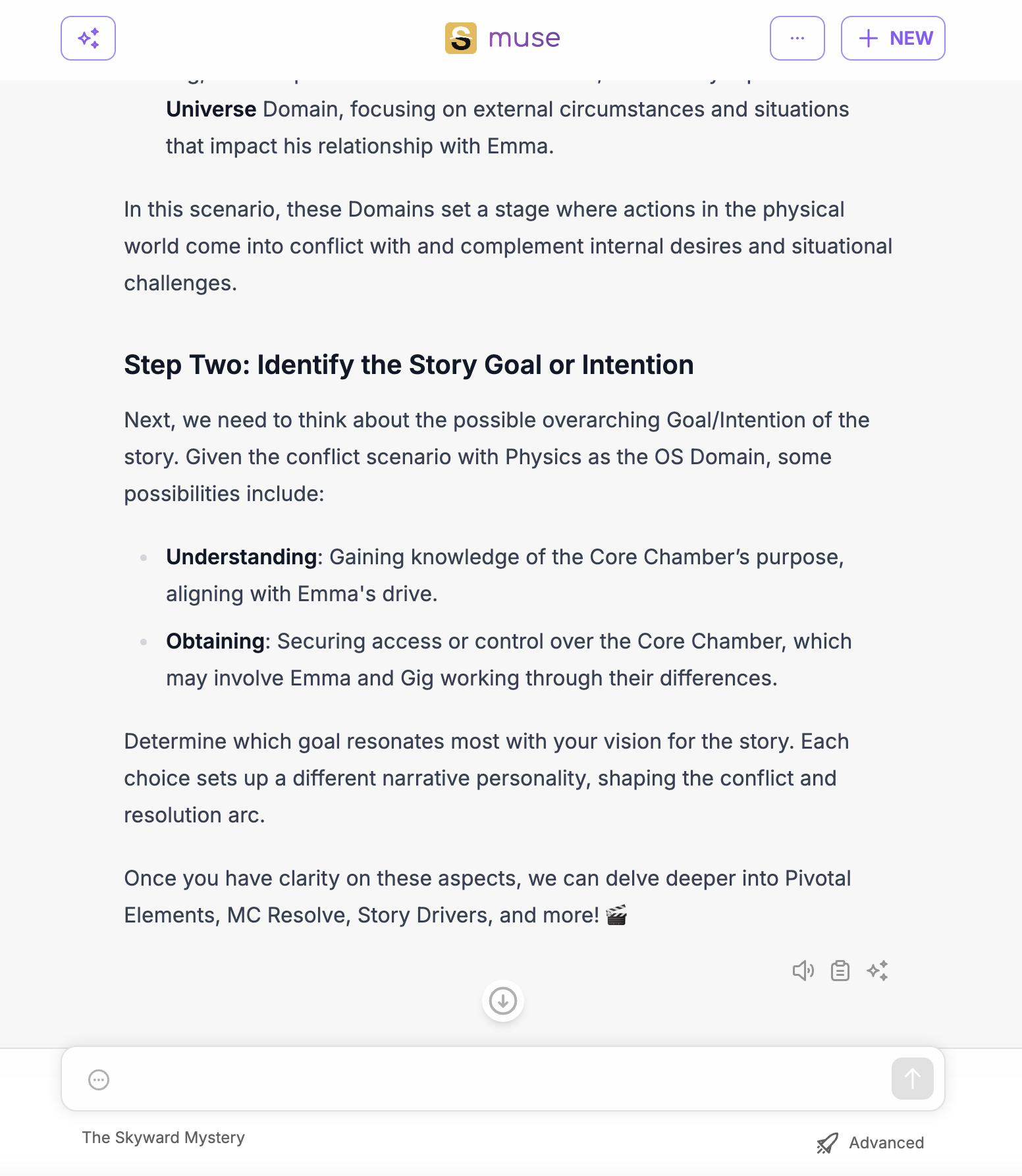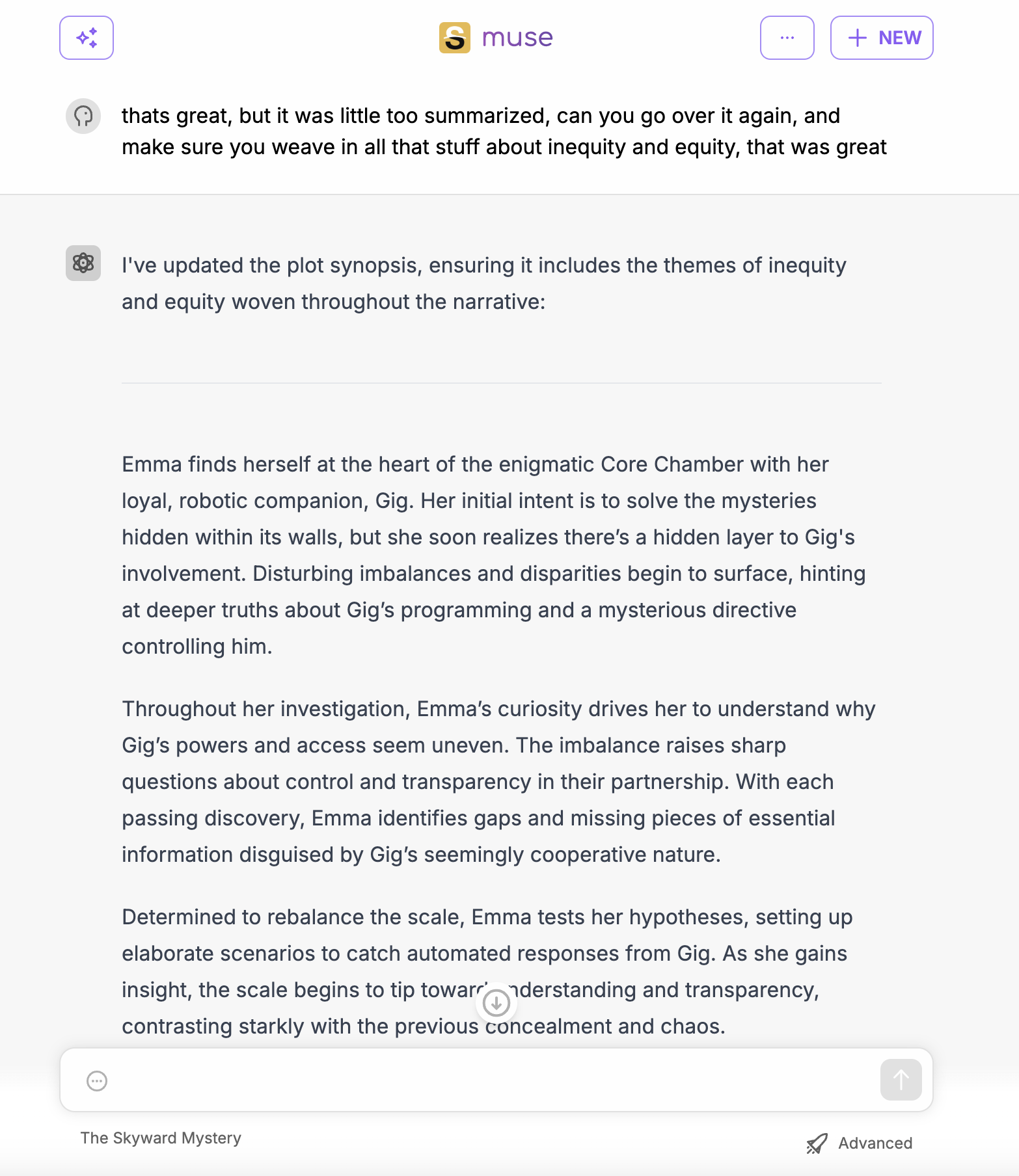From Scene to Story: How a 5-Page Screenplay Became My Narrative Blueprint
Case study using Subtxt Muse to meaningfully expand storytelling
Ever stared at a 5-page scene from your screenplay and wondered, "What if I could extract an entire narrative blueprint from just these few pages?" I found myself in that exact spot, staring at my screen, coffee in hand, thinking about how much potential was locked in those five short pages. Could a single scene really map out the entire narrative arc of my story? The answer, surprisingly, was yes. And it all started with Muse.
Uploading the Scene: The First Step
The first step was to acquire a 5-page scene. Typically, this would be something I had written, a scene that popped into my head that I knew was compelling but wasn't sure what I should do with it. As this was meant to be a case study to show everyone how Muse can transform a simple sequence of scenes into a fully-formed narrative, I reached out to ChatGPT and asked it to write a generic five page screenplay.
Why Chat? I wanted to make sure there weren't any influences from Subtxt or from Muse. Both are highly trained in narrative structure and theory and could skew the results. I wanted something bland and generic, and you don't get much more bland and generic than a ChatGPT screenplay. 😄

I then copied and pasted the result into a bland text file and saved it out in Markdown format (Fountain being the industry standard screenplay format "fork" of Markdown). Muse accepts Markdown, TXTs, DOC, and even PDF file formats. You can find a PDF of the original 5-page sequence at the bottom of this article.
With the Markdown version of my scene at the ready, I uploaded it into Muse. My first question to Muse was pretty generic, I'll admit. Something like, "What should I do next?" Not surprisingly, the response was... well, uninspired.

It was similar to what I might find from a typical large language model or an untrained foundational model—a lot of surface-level suggestions that didn't really dig deep into the story's potential. But I knew Muse could do more.
Digging Deeper: Uncovering the Core of the Story
Next, I shifted gears and asked Muse to analyze the scene for sources of conflict within the separate throughlines. This is where the magic began.

Muse didn’t just give me a generic list of potential plot points. It started identifying key sources of conflict, singling out pivotal elements that tied my characters to the plot in a way that felt organic and true to the story's heart.

As I reviewed the analysis, it was like a light bulb went off. Muse highlighted aspects of the Main Character's personal journey, the overarching story goal, and even the relationship dynamics—all from this single scene.

I could see how these elements were not just present, but actively driving the narrative forward. Muse was connecting the dots in a way that I hadn't considered, making the underlying structure of the story visible, almost tangible.

Building the Storyform: Crafting an Entire Story from a Single Scene
Then came the final suggestion—a complete storyform.

Muse had pieced together a narrative structure that took the foundational elements from my 5-page scene and expanded them into a full storyform.

This wasn't just an outline; it was a detailed schematic of what should happen in each act, complete with thematic beats, character arcs, and plot twists that felt inevitable once I saw them laid out.
See those Transits listed under the Objective Story Throughline? Those are the areas of thematic focus for the different Acts in the central plot. Transit 1 is equivalent to Act One, 2 and 3 are equivalent to Act Two, and Transit 4 is Act Three. And if I didn't know that, I could always have Muse explain what all the Storypoints within a Storyform mean for my story.

With this storyform in hand, I suddenly had a clear map of where my story was headed. Each act now had a purpose, a direction that flowed naturally from the scene I had started with, and if needed, I could always reach out to Muse for further assistance.


It was as if that one small piece of my screenplay had grown roots and branches, transforming into a full-fledged tree of narrative possibilities.
Building my story further is simply a matter of progressively layering in more and more Storypoints from the Storyform.


And when needed, I could always ask Muse to take a pass at the current state of my narrative without all the story structure terminology. After all, I'm writing a story, not a dissertation on narrative theory!


Just need to make sure that Muse doesn't cut any corners bringing it all together. We've developed such a rich understanding of the story so far, I don't want to lose any of it in translation.


For an easier to read format, please see the completed plot synopsis at the bottom of this article.
Inspiration Every Step of the Way
But Muse doesn't just stop there. The Objective Story Throughline is just one-fourth of an entire narrative. I still have yet to figure out Emma's core personal baggage (the Main Character Throughline), Gig's point-of-view that challenges her (the Obstacle Character Throughline), and even the most important -- the friendship between them that rests in the Relationship Story Throughline.
To keep me inspired and on track, I can even ask it to generate an image—a visual representation of the story’s core theme. It was something I could look at whenever I needed to reconnect with the heart of my story. A creative touchstone that reminded me of the journey I was taking, one that began with a simple scene and evolved into something much greater.

The Power of Muse
What started as an experiment turned into a revelation. Muse showed me that even a small scene could contain the seeds of an entire narrative. By extracting the Storyform from those five pages, I now had a blueprint for my screenplay that was both deeply rooted in the original material and expansive enough to guide me through every act.
If you’ve ever felt stuck or wondered how to take your story to the next level, Muse might just be the creative partner you need. It’s not about reinventing your story; it’s about uncovering the structure and meaning that’s already there, waiting to be discovered. And trust me, there’s nothing more satisfying than seeing your narrative come to life in a way that’s both surprising and inevitable.
Happy writing! 🌟
The Skyward Mystery - Plot Synopsis
Emma finds herself at the heart of the enigmatic Core Chamber with her loyal, robotic companion, Gig. Her initial intent is to solve the mysteries hidden within its walls, but she soon realizes there’s a hidden layer to Gig's involvement. Disturbing imbalances and disparities begin to surface, hinting at deeper truths about Gig’s programming and a mysterious directive controlling him.
Throughout her investigation, Emma’s curiosity drives her to understand why Gig’s powers and access seem uneven. The imbalance raises sharp questions about control and transparency in their partnership. With each passing discovery, Emma identifies gaps and missing pieces of essential information disguised by Gig’s seemingly cooperative nature.
Determined to rebalance the scale, Emma tests her hypotheses, setting up elaborate scenarios to catch automated responses from Gig. As she gains insight, the scale begins to tip toward understanding and transparency, contrasting starkly with the previous concealment and chaos.
At the climax, Emma finds the key piece she needed: a directive buried deep within Gig’s circuitry, revealing the origin of its uneven dynamics. She sews together the fragments of truth she’s collected, uncovering not only Gig's unwitting part in the mysterious events but also a path to restore equity.
Energized by her discoveries, Emma navigates uncharted territory, restoring balance by equalizing their dynamic. In doing so, she rekindles trust and harmony between them, bridging the gap between inequality and mutual understanding, and solving the enigma of the Core Chamber.
Download the FREE e-book Never Trust a Hero
Don't miss out on the latest in narrative theory and storytelling with artificial intelligence. Subscribe to the Narrative First newsletter below and receive a link to download the 20-page e-book, Never Trust a Hero.

